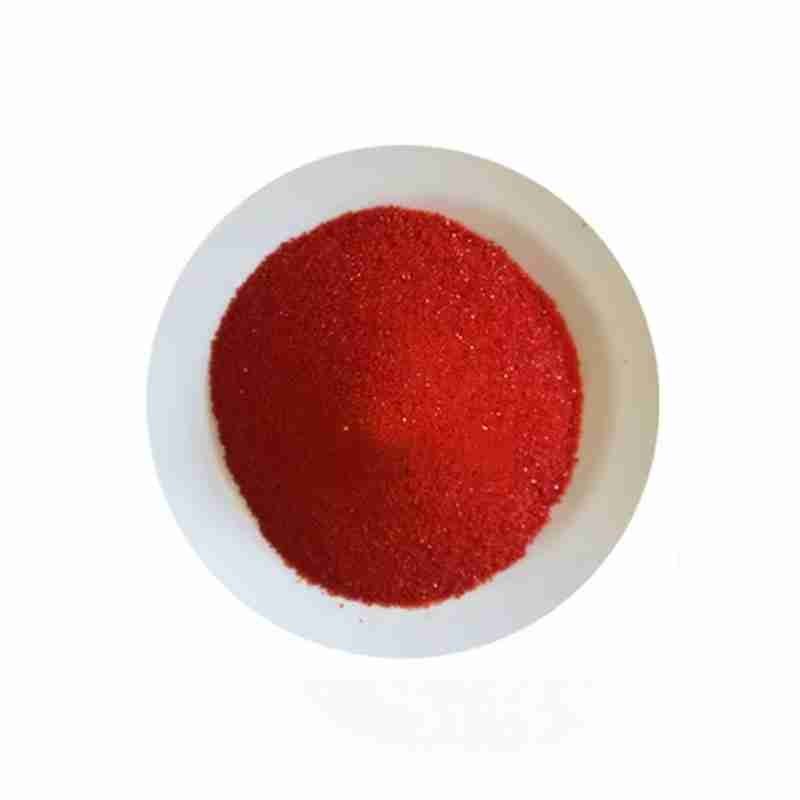Iron Oxide CAS #1317-61-9 Triiron Tetraoxide
Iron trioxide, chemical formula Fe3O4. Also known as iron oxide black, magnet, magnetite, or black iron, it is a black crystal with magnetism, hence it is also called magnetic iron oxide. It cannot be pronounced as ??ferrous metaferrite?? or ??ferrous metaferrite?? Fe (FeO2) 2, and is not a mixture of iron oxide and ferrous oxide, but can be approximated as a compound of ferrous oxide and ferrous oxide. This substance is soluble in acids, insoluble in water, alkali, and organic solvents such as ethanol and ether. Natural ferric oxide is insoluble in acids and can easily oxidize into ferric oxide in the air in humid conditions. Usually used as a pigment and polishing agent, it can also be used to manufacture audio tapes and telecommunications equipment.
发送询盘
Iron Oxide CAS #1317-61-9 Triiron Tetraoxide
| Triiron tetraoxide Basic information |
| Physical Properties?Occurrence and Uses?Preparation?Reactions |
| Product Name: | Triiron tetraoxide |
| Synonyms: | Iron(II,III) oxide, 98% (metals basis);Iron(II,III) oxide, 97% (metals basis);Iron(II,III) oxide, 99.95% (metals basis);Iron(II,III) oxide: (Ferrosoferric oxide
: Iron(III) oxide);Iron (II, III) oxide, 99.5% min (metals basis);Iron (II,III) oxide, 96% (metals basis) Synthetic black iron oxide;Iron(II,III) oxide, Puratronic, 99.997% (metals basis);Iron oxide, magnetic nanoparticles solution |
| CAS: | 1317-61-9 |
| MF: | Fe3O4-2 |
| MW: | 231.53 |
| EINECS: | 215-277-5 |
| Product Categories: | nano structured material;metal oxide;Inorganics |
| Mol File: | 1317-61-9.mol |
 |
|
| Triiron tetraoxide Chemical Properties |
| Melting point | 1538???C(lit.) |
| density | 4.8-5.1?g/mL?at 25???C(lit.) |
| refractive index | 3.0 |
| Fp | 7???C |
| storage temp. | -20??C |
| solubility | Aqueous Acid (Slightly) |
| form | powder |
| color | black |
| Specific Gravity | 5.2 |
| Odor | at 100.00?%. odorless |
| Water Solubility | Insoluble in water and organic solvents. Soluble in concentrated mineral acids. |
| Merck | 14,4040 |
| Stability: | Stable. Incompatible with strong acids, chloroformates, peroxides. |
| CAS DataBase Reference | 1317-61-9(CAS DataBase Reference) |
| NIST Chemistry Reference | Iron(ii,iii) oxide(1317-61-9) |
| EPA Substance Registry System | Iron oxide (Fe3O4) (1317-61-9) |
- 2
- 2-diallylpent-4-en-1-amine
- 4
- 95-16-9
- Ammonium sulfamate
- Benzothiazole
- cas:67889-00-3ح2
- cas:83524-75-8 | pigment black 32
- cas:928836-00-4 | 2
- cas:932745-70-5 | 4
- Chemical Minerals
- Coconut diethanolamide
- Daily Chemicals
- discount
- for sale
- General pvc resin
- hexyl D-glucoside
- in stock
- Lauramidopropyl betaine
- LAURIC ACID MONOETHANOLAMIDE
- Petroleum Additives
- Plasticiser
- Ploymers
- price
- PVC
- quotation
- Raw Materal
- Remove term: Petroleum Additives Petroleum Additive
- SODIUM ETHYL 2-SULFOLAURATE
Related Products
Chemical Name: Dehydrocholic acid
Synonyms: Acide dehydrocholique; Triketocholanic acid
CAS No.: 81-23-2
Molecular Formula: C24H34O5
Molecular Weight: 402.53
Appearance: Powder
Hexaammonium molybdate is a high-purity, water-soluble molybdenum compound with the chemical formula (NH4)6Mo7O24??4H2O. It is a crystalline solid that serves as a molybdenum source in various applications, including agriculture as a micronutrient fertilizer and in the industrial production of catalysts and pigments. Known for its stability and reactivity, it is used to enhance the properties of steel and other alloys, promoting their hardness and resistance to wear.
Chemical Name: Choline salicylate
CAS No.: 2016-36-6
Molecular Formula: C12H19NO4
Molecular Weight: 241.28
Appearance: Red-Brown Crystal
Sodium aluminosilicate (CAS No.73987-94-7) is an inorganic compound.
It has a certain application in industry. For example, in the ceramic industry, sodium aluminosilicate can be used as a flux and an ingredient in ceramic glazes, helping to improve the performance and appearance of ceramics.
In some chemical processes, it may also function as a precipitating agent or an additive.
In the field of materials science, the properties and structural characteristics of sodium aluminosilicate make it have potential application value in the research and development of some new materials.
Silicon dioxide, commonly known as silica, is a naturally occurring compound found in quartz and sand. It is a primary component of most rocks and is widely used in various industries due to its high thermal stability, chemical inertness, and optical clarity. In chemical applications, it is valued for its abrasive, refractory, and adsorptive properties, making it essential in products like glass, ceramics, and electronics.
Chemical Name: 1,1,2,2-Tetrachloroethane
Other Name: Tetrachlorethane
CAS No.: 79-34-5
Molecular Formula: C2H2Cl4
Molecular Weight: 167.85
Appearance: Liquid
Chemical Name: Arabic gum
CAS No.: 9000-01-5
Appearance: powder
Aluminum chlorohydrate is an inorganic compound often used as a coagulant in water treatment processes. It is also known for its astringent properties and is utilized in various personal care products, such as antiperspirants and deodorants, due to its ability to temporarily close sweat glands. It enhances the viscosity and stability of formulations, making it a valuable ingredient in cosmetics and pharmaceuticals.
Product name:Cyclopentane
Purity:96%
Appearance:White powder
Package:25kg/bag
Sample:Available
Chemical Name: Ammonium Iron(II) Sulfate
Synonyms: Diammonium iron bis(sulphate); iron (ii) ammonium sulfate
CAS No.: 10045-89-3
Molecular Formula: FeH5NO4S
Molecular Weight: 170.95
Chemical Name: UV-120
Other Name: (2’,4’-Di-tert-butylphenyl 3,5-di-tert-butyl-4-hydroxybenzoate)
CAS No.: 4221-80-1
Molecular Fomula: C29H42O3
Molecular weight: 438.66
Assay: ≥99%(LC)
Common English name: 5-iodo-2,3-dihydropyridazin-3-one
CAS No.: 825633-94-1
Molecular formula: C4H3IN2O
Molecular weight: 221.98
Sample: Available


















